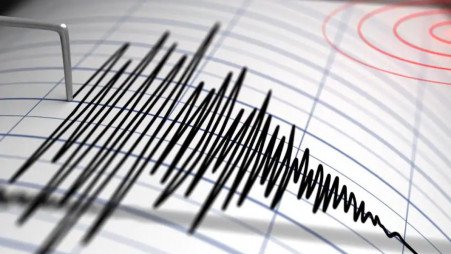Srinagar, Feb 12: Environment and Geological experts have recommended a critical assessment of various factors that exacerbate the earthquake vulnerability in Kashmir to develop a robust strategy for earthquake risk assessment in the Himalayan region.
A week after a strong earthquake devastated Turkey and Syria leaving more than 28,000 dead, experts on Sunday termed it a wake-up call to address the vulnerability to earthquakes in Jammu and Kashmir region.
In a tweet, noted earth scientist and Vice-chancellor, Islamic University of Science & Technology Awantipora, Prof. (Dr.) Shakil Ahmad Romshoo said thousands have died & hundreds of buildings have flattened after 2 devastating earthquakes of 7.8 & 7.6 magnitudes struck Turkey & Syria within 12 hours.
“It is a wake-up call to remind us about our vulnerability to earthquakes in the Indian Himalayas,” he said.
As per the data from the National Center for Seismology, Kashmir is located in a seismic Zone V, or a very high-risk zone and during the past two decades. The region has faced nearly 100 tremors; some had epicenters near Srinagar.
Senior seismologist, Prof. (Dr) Gh. Jeelani from Department of Earth Sciences, University of Kashmir told Rising Kashmir that there is a need to address the vulnerability to earthquakes in the Himalayan region.
“It is the responsibility of the implementing agencies to advise people for earthquake-resistant houses. We should follow the recommendations of the National Center for Seismology,” he said.
Prof. Jeelani said earthquakes of any magnitude can occur any time with almost no indications. They can affect small remote areas, or destroy large cities, he said.
“For building earthquake houses, professionals recommend adequate vertical and lateral stiffness and strength – specifically lateral. Structures tend to handle the vertical movement caused by quakes better than the lateral, or horizontal, movement,” Prof. Jeelani said.
Noted Geologist and researcher, Prof. S.K. Pandita from the Department of Geology told Rising Kashmir that Jammu and Kashmir falls under vulnerable regions of the earthquake zone.
“We should remain prepared for these kinds of disasters. Most of times more causality are reported, due to faulty building plans or designs. We can overcome causalities, if we follow recommendations of National Disaster Management Department and seismic codes,” he said.
Prof. Pandita said major areas of both Srinagar and Jammu cities are unplanned. We should work on these factors to overcome loss. Last time in 2005 year, tremors were felt in Jammu region also. There is need for awareness among the people, he said.
In Kashmir, a joint research conducted by researchers titled ‘Seismic hazard and probability assessment of Kashmir valley, northwest Himalaya’ that was published in Journal of the International Society for the Prevention and Mitigation of Natural Hazards.
It was conducted by Dr. Javid Ahmad Dar, noted earth scientist Prof. (Dr.) Shakil Ahmad Romshoo, Dr. Irfan Rashid, Dr. Imtiyaz A. Parvez, Dr. Sareer Ahmad Mir and Dr. Midhat Fayaz.
“The Seismic hazard analysis of the northwest Himalayan belt was carried out by using extreme value theory (EVT). The study mentions that the statistical evaluation of 12,125 events from 1902 to 2017 shows the increasing trend in their inter-arrival times,” the study said.
Prof. Romshoo and his team observed that critical assessment of various geological, geomorphic, geotechnical, hydrological, and socioeconomic factors.
“These factors exacerbate the earthquake vulnerability in the valley shall go a long way in developing a robust strategy for earthquake risk assessment and seismic micro-zonation of Kashmir,” it said.
The study also highlighted the seismic hazard of NW Himalayan belt in general and Kashmir basin, in particular, using empirical relationships supplemented by lithological, geomorphological, geotechnical, hydrogeological, and socioeconomic data.
The study also revealed that the regional tectonic and seismicity framework of the northwestern Himalayas, India, depicts the patterns of seismicity and their relationships with both surface and subsurface tectonic elements.
It said the rate of seismicity and recurrence intervals reveals the typical incremental interplate tectonic factor. It has also shown that the annual earthquake risk probability of NW Himalayan belt shows an increasing trend in seismicity with decreasing recurrence periods.
“The probability of earthquakes of specific magnitudes shows an increase with the lapse of the time period. Kashmir located in the NW Himalaya, reveals higher probability to greater magnitude earthquakes, due to its tectonic-geomorphic setting,” the research said.
The cumulative impact of the various influencing parameters, therefore, exacerbates the seismic hazard risk of the valley to future earthquake events.
The research also observed that despite the fact that the seismic activities in valley are relatively low; the seismic risk is considerably exacerbated due to the lithological, edaphic, geotechnical, hydrological, and socioeconomic factors.
“The amplification of seismic wave in the soft alluvium, the concentration of populated areas around the alluvial plains and wetlands associated with the high liquefaction potential of soils and faulty building construction practices in vogue in the region exacerbates the seismic hazard of the Kashmir valley,” it said.
As per research, spatial and temporal seismicity pattern of the valley is closely related to both tectonic regime and fault architecture. The regions between the rupture zones of these great earthquakes are recognized as seismic gaps that are interpreted to have accumulated potential slip for generating future great earthquakes.
The isoseismals of 1905 Kangra Earthquake and 2005 Kashmir Earthquake reveal that the intensity VII reaches the Kashmir valley with sufficient energy for triggering the collapse of most of the engineering structures
“Geologic conditions contribute significantly to the earthquake hazard and risk enhancement, as the ground shaking caused by an earthquake is modified by the rocks and soft sedimentary deposits near the surface,” it said.
As the study, the major cities and towns in the valley have high population density. The valley currently follows a modern but unsafe building construction practice which lacks earthquake-resistant design and structural considerations, despite the historical high earthquake risk and vulnerability of the valley.
“Even most of the public infrastructures like schools, hospitals, shopping malls, industrial estates, etc., are built without any safeguard measures for earthquake resistance which increases the risk of the people and public,” it said.
The researchers observed that infrastructure to the possible earthquake in the region. Paradoxically, there are no earthquake disaster shelters and adequate open spaces in the residential areas, even in the urban centers in the valley.
They also maintained that Kashmir valley has also witnessed rapid unplanned urbanization, growth of high-rise structures, and occupation of fragile landscapes which adds multiple dimensions to the future seismic hazard.
Critical assessment needed for earthquake prone Kashmir: Experts

Leave a Comment
Leave a Comment







